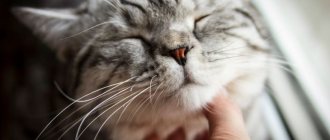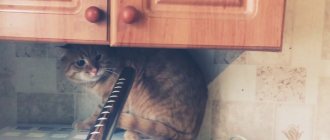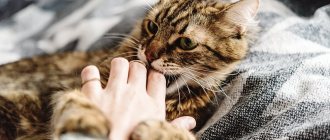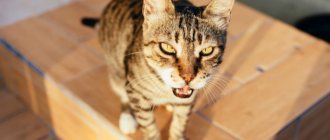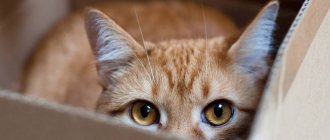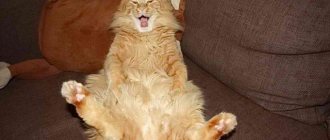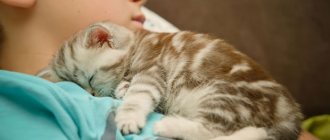The same banned issue for which Ernst fired Malakhov!
Joints and cartilage will be cured in 14 days with the help of ordinary...
Have you been trying to heal your JOINTS for many years?
Head of the Institute for Joint Treatment: “You will be amazed at how easy it is to heal your joints by taking every day...
Read more "
The beauty of the back muscles always amazes, but in order for this to happen, it requires work on yourself for a long time. Only regularly performed exercises on the back muscles can preserve the health of the spine and improve posture. There are some principles for performing gymnastics, but the main one is systematicity.
Conditions in which there will only be benefit
There are many pathologies for which gymnastics is indicated as a treatment option. It has several goals, among which one of the main ones is strengthening skeletal muscles and ligaments. Thus, gymnastics is an indication if there is a dystrophic condition of the muscles, the consequences of debilitating diets, as well as work that involves sitting or staying in one position for a long time.
A doctor’s recommendation to do gymnastics is necessary if the patient has an unhealthy lifestyle or habits that negatively affect the condition. Some congenital pathologies may require a course of gymnastics. This applies to scoliotic curvature of the spine, age-related changes in which the structure of cartilage tissue and metabolism occurs. One of the main methods of treatment is gymnastics for osteochondrosis.
Few rules
When you have an intention to perform exercises, it will be useful to familiarize yourself with some rules that will help you get results. Before you start doing gymnastics, stretching exercises are necessary. If pain occurs, it is better to stop for a few days until the pain goes away. If discomfort is felt during the execution of the complex, it is necessary to reduce the amplitude of movements until the body adapts to the load.
Gymnastics for the back muscles involves activities where sharp and jerky movements that can stretch unprepared muscles are contraindicated, and any exercise is done carefully, smoothly and without haste. When back training is carried out, they should be performed daily; only with this approach can you expect results. It is prohibited to train during periods of exacerbation of spinal pathology or osteochondrosis. Although gymnastics is a component of any treatment, it is not the only method, it is worth remembering.
Before performing any exercise, it is contraindicated to take painkillers; the pain will dull, but there is a chance of harming the body. When there is a pathology of the spine, you should consult your doctor before performing gymnastics. After the exercises, the body should not feel tired: gymnastics leaves behind only pleasant sensations.
It is not difficult to remember and follow the rules, but they will help protect your back from many diseases or aggravation of those that already exist. When everything is clear with this, it’s worth moving on to the beginning, which involves warming up. Without this stage, severe harm will be caused to the body, and results may not be obtained.
Who is it suitable for?
The benefits of gymnastics that strengthen the back muscles will be regardless of a person’s age or gender. The sooner you start doing exercises, the greater the likelihood of preventing illnesses, as well as getting rid of spinal diseases and pain. If you have serious illnesses, then before performing any complex you need to ask a doctor’s advice to choose an individual one.
Classes will allow you not only to achieve strong back muscles, but also to stretch the spine, strengthen ligaments, and the muscle corset. All this leads to improved blood circulation and metabolism. In this case, health will not leave the body for many years.
Preparing for a set of exercises
Before starting the main part, it is recommended to perform exercises to relax the back muscles and warm them up. This is preparation for the main lesson, it will improve blood flow, give more elasticity and flexibility to the muscles. Preparation will help you avoid damage during the main stage. You can start performing any complex or that is presented below.
You need to start by breathing deeply for a few seconds, with your feet shoulder-width apart. Then an exercise is done that involves raising and lowering the shoulders, and then several circular movements. It is very useful for the neck to move your head in different directions, and for the joints - swing your arms in different directions, move your pelvis in a circle. Everyone is familiar with the exercise when you need to bend over to your knees, which are in a straight position, reach for your toes, straighten up and bend back.
To warm up, it is useful to walk in place, waving your arms, and at the end take several deep breaths and exhalations. When muscle relaxation exercises are completed, you can proceed to the main complex, which allows you to make your back stronger.
Strengthening gymnastics
For the complex to bear fruit, it is performed in a position on the back or stomach, the surface must be hard. It is important to repeat each exercise at least five times, gradually increasing the load. However, when doing gymnastics, it is important not to overdo it; back exercises should have a moderate load.
The same banned issue for which Ernst fired Malakhov!
Joints and cartilage will be cured in 14 days with the help of ordinary...
The selected set of exercises may be approximately as follows.
You should start with an exercise - a backbend, for which you need to sit on your stomach, placing a pillow on it, your arms are parallel to your body. Slowly and smoothly you need to lift your head off the floor surface, and with it the upper part of your chest. Fix in this position for several seconds and return to the starting position. Then the legs are brought into the same position, fixed for 15 seconds, and then the original position is assumed. In the third stage, both ends rise, smoothly, slowly.
In order to perform the next exercise, you need to lie on your back and bend your legs at the knee joints. The palms should reach towards the knees, the back arches during execution. Then, when relaxation is achieved, the elbow should touch the opposite knee and vice versa.
To perform this exercise, you will need a table that is stable. The exercise helps strengthen your back, but it is difficult to perform. You need to lie on your stomach on the surface of the table, with your hips located at the edge, and your hands covering the lid. The legs come off the floor and rise to the level of the table top; you need to hold them for a second and then lower them.
The well-known “bicycle” and “scissors” exercises, as well as leg swings, allow you to strengthen your muscle corset. It is useful to resort to yoga asanas; you can do it yourself or with the help of an instructor.
After relaxing your back and feeling pleasantly tired, you can begin exercising on exercise machines. They are available in every gym, but you can use the products that you have on hand at home. Any technique will require 10 to 15 repetitions, it all depends on the person’s fitness level.
Any exercise can be performed using a fitball. In a supine position, with your knees bent, you need to twist your back to the sides. Loading and relaxation can be achieved in a position on all fours, with the upper and lower limbs on the same side abducted in parallel. You can choose any exercise using dumbbells; you may also need a horizontal bar. However, the last two approaches are indicated when the body is trained.
Another option
The “lotus” pose is very useful; during it, a person sits on the floor, bends his arms at the elbows, and places his palms on his shoulders. Then the arms are raised up and the arms are swung forward and backward. Then lean deeply back and firmly touch the surface of the floor with your forearms.
In a kneeling position, the right hand is raised, and the left hand is moved to the appropriate side, it makes circular movements. Then the hand changes after 10 repetitions.
In the initial vertical position on your feet, stand on your toes, raise your arms up, and pull your stomach in. A slow bend is made forward, first the cervical, then the thoracic, and finally the lumbar spine is bent. You need to clasp the ankle joint with your hands, and press your body tightly against the hips. When everything is done, slowly return to the starting position.
Spread your legs wide, place the palms of your bent arms on your shoulders. The body turns to the right, the hand on the corresponding side, palm up, is moved as far back as possible, it makes a wide swing, then returns to its original position. Repeat everything for the other side.
In conclusion
When the main gymnastics complex is completed, you will need exercises that will allow you to relax. Everything ends with techniques aimed at relaxation, restoration of breathing and pulse. The pace of physical activity must be reduced. Swings, shaking of the limbs and torso are shown; rotation of the limbs is useful. Additionally, stroking, patting the tissue with the palms, and rubbing are carried out, all accompanied by a deep inhalation, then exhalation. It is undesirable to complete gymnastics without performing such techniques, this is due to the fact that muscles that are warmed up are more susceptible to sprains and injuries.
Gymnastics to strengthen the muscles of the back and the ligaments of the spine, when performed regularly, will be the key to maintaining health and preventing many diseases. In the case of a well-chosen complex, the effect will not take long to arrive and will ensure mobility for a long time. However, you should constantly lead a healthy and, most importantly, active lifestyle, avoiding heavy physical activity.
2017-02-17
Mark their “property”
Not only dogs are used to doing this. All animals have a developed sense of ownership. Moreover, what is important to them is not so much the house as the owner. It is to him that the pet becomes attached. The owner symbolizes comfort, warmth, and satiety. Therefore, cats try to be closer - this is how they “mark” their loved one.
It may not be obvious to you, but other animals will smell the scent you leave behind. When a cat gently tramples with her paws, she marks. There are sweat glands on the pads, which leave a characteristic odor. This happens even if the cat simply rubs its fur against you.
Why does a cat sleep on or above a person's head?
In this video you will learn why cats love to sleep on the human body.
This question is one of the frequently asked questions on pet forums. Many owners are worried that this is quite harmful for a small child or themselves. If you are worried about this, and you are concerned about the question: “Why do cats sleep in their feet?” We dare to dissuade you.
Furry pets often sleep near body parts that they feel may be susceptible to illness. There is no need to torment yourself with questions about why cats sleep at your feet; most likely, they are trying to heal your feet with their positive energy.
Similar to the previous version, you can answer the question of why cats sleep on humans. They are very sensitive animals and are always looking for places with the most bad energy. If your hands hurt, the cat will lie down next to your hand, etc.
From a medical point of view, the answer to the question why a cat sleeps with you can be answered as follows: cats love warmth very much, and as you know, the warmest place in a person is the sick one. This explains why a cat sleeps on its chest, stomach, or near these places. When one of the organs becomes ill, its temperature rises slightly.
We invite you to familiarize yourself with: Play complex for cats: buy or make it yourself
When asked why a cat sleeps with other pets, one can give a similar answer as when considering a person as an object on which furry pets are accustomed to sleep.
Cats are too proud animals; Siamese and other “elite” purebred pets show this especially strongly. Lying down on a person's chest, closer to the head, the cat shows its superiority over the one it considers the master of the house.
Rule and command!
The second psychological version that answers the question of why cats sleep with people is a sense of protection. Pets choose first of all the place in which they will feel extremely safe.
Animal instincts force cats to locate themselves in a place that will protect them from possible enemies. Such a place is the bed of a large and strong owner.
The body temperature of these animals is higher than that of humans. During the cold season, cats climb on people to warm themselves and share positive energy with them.
- If a person is sick, then the pet feels that the owner is ill and tries to cure it. Esotericists have long found out that cats can alleviate the condition of patients and even heal. In such cases, the animal is placed on the sore spot, signaling the need to consult a doctor.
- A cat lying on the laps of house guests wants to control their energy. In this way, the entry of negative emotions into the aura of the home is prevented.
- Cats are recognized as parapsychologists, the best conductors of spiritual energy. Unlike dogs, which absorb negative biocurrents, representatives of the cat family pass it through themselves. By falling asleep on a person, they pull out all the negativity from the body, and in exchange give positively charged energy.
Cats often choose one person to feel comfortable around. They meet him when he arrives home, beg him for food and climb onto his lap. Next to this person, cats choose a cozy place to sleep. What are pets guided by in this case?
- Cats love calm people. Slow and leisurely movements, the soft timbre of the voice cannot but conquer the fluffy beauty.
- They like those who do not pull the animal by the paws and tail, do not constantly carry it in their arms, but give it freedom. The cat will come when he wants to communicate.
- People with magical gifts are very attractive to cats. It is no coincidence that people have the opinion that these animals are the best companions of sorcerers and witches.
- It happens that a cat and a person are ideally suited to each other in terms of energy. If an animal comes into the house on its own initiative, then the pet has chosen an owner whose aura is compatible with its own.
Wondering what kind of people cats love, some owners assume that it is enough to pamper the animal and feed it tasty food. However, in the case of domestic cats, this is not entirely true. In addition to physical comfort, furry beauties need an emotional connection with a person. It is for this purpose that cats sometimes go to sleep on their owner. Closeness in spiritual terms is important for pets living simultaneously in different dimensions.
We invite you to read: How and what breed of cat to choose?
According to esotericists, the energy interaction between a person and his cat cannot be compared with anything - it is so unique. People have spent thousands of years next to cats. At first they were enemies - prey and hunter. Over time, man turned into the most intelligent and active creature on earth.
The cats could only recognize his superiority. They came to a person and lay down next to the head of the head or at the feet to become eternal guards against negativity and evil entities from the intangible world. In exchange, people give furry pets the food, care and love that these emotional and proud creatures so desperately need.
To avoid the risk of contracting dangerous diseases, it is recommended to keep the animal and its tray clean. Provide your pet with a comfortable corner away from busy areas of the house. Then the cat will sleep on the person only in case of energetic need: for treatment or friendly interaction of biocurrents.
Kitten sleeps on his leg
Very often, a cat lies at a person’s feet. Since she is capable of feeling any disease. Alternatively, go see a doctor, maybe you have some problems with the joints or blood vessels of your legs.
But often cats just love to sleep at the feet, they feel warm and comfortable there. This is a kind of manifestation of love for its owner.
The cat climbed on his head
It is generally accepted that if a cat sleeps on its head, this is not a very good sign. But there is no need to sound the alarm, since it is not uncommon for her to show her humility and devotion in this way. If this bothers you, don’t rush to drive it away. Try not to disturb her sleep and remove her as carefully as possible so as not to hurt her.
Your cat's dream near your head can also indicate your pet's desire to help you drive away bad thoughts and get rid of garbage in your head. A headache is also felt very acutely by an animal, so he can lie down there in order to relieve the pain.
Misses his mom
Did you think that only people love their parents? When you bring a small kitten into your home, it may miss its mother for a long time. The baby understands that he is not able to take care of himself. Being left without his mother's protection and care is very stressful for him. Therefore, the animal will strive to find a suitable replacement. A person is perceived as a kind of alternative to mother.
A different situation is also possible - if there is an adult dog or cat in the house. The kitten will be drawn to them and will go to sleep next to them. But only if the other pet does not object and calmly reacts to such behavior.
The cat lies on its stomach, what does this mean?
The cat hugged her sore knee. When trusting contact between the owner and the cat is established, pets are able to heal others.
As soon as they feel human pain, they try to immediately lie down in that place, they can fall asleep or purr. This way the pain subsides or goes away altogether. There are times when the situation is difficult, the cat does not leave the patient for hours, trying in every possible way to heal him. There are statistics that say that lovers of pets such as cats are much less likely to turn to enemies.
The kitten softens its butt
The cat may feel early pregnancy. There have been cases when a woman found out about pregnancy much later than a cat.
By lying on its stomach, a cat can also try to improve the well-being of its beloved owner. It is possible that such a person has problems with internal organs, and at this moment the cat is trying in every possible way to warm the sick person from the inside. Cats purring can reduce pain. The vibrations from purring do wonders.
Another reason is the owner’s depression. Once the cat has caught it, he can lie closer to the solar plexus and try to relieve stress.
Perhaps your pet has her own idea about your sleep, and she knows exactly why cats sleep on humans. And we can only guess about its reasons.
The most plausible version is that cats like to sleep in warm places, so they choose beds near switched-on light bulbs, heating devices, and laptops. And at night they happily go to bed with their owner. Moreover, the cat’s desire to lie on a person is explained by the desire to find the warmest place.
Many animals show love and care in this way. You've probably noticed that a cat often climbs into the bed of small children and lies down on or near the child. If you catch your pet at such a moment, you will see that her sleep is quite sensitive. Perhaps parental instinct compels us to take care of a human child.
Laying down on a person, the cat begins to purr a lullaby, apparently suggesting that you will not be able to sleep without it. The only negative is that the cat, when choosing a place to sleep on you, does not always take into account the convenience for the owner, so it can settle down absolutely anywhere.
Some felinologists, explaining why cats love to sleep in public, argue that this is how the animal realizes its desire to control a person. Perhaps at this moment she thinks that she herself put you to sleep and will decide when to wake up, because quite often cats wake up their owners by touching them and meowing, and sometimes scratching and biting their legs.
Cat on your back
Black cat
If we talk about what the gesture means when the cat in front of you lies on its back and begins to rock, it will mean that it is as relaxed as possible and trusts you completely. After all, a cat's stomach is the most vulnerable place. And if he boldly turns over with his stomach up, rejoice, you are lucky. He has absolutely confidence in you. And hurry up to scratch his belly.
But if the cat lies on your back, then there is an explanation for this. Any cat chooses the place where it will be most comfortable. When he lies on your back, most likely he wants you to feel his presence as much as possible, to feel him completely
We invite you to read: Duphalac for constipation in cats: instructions for use
Another reason why he may lie on his back is some kind of disease. A cat, like no one else, subtly senses all the problems in the human body. If you have a very friendly and trusting relationship with him, then she will feel your pain even from a distance.
You may have osteochondrosis or tension. In this case, she will definitely lie down on her back and begin to play with her claws, pulling out all the accumulated tension from you.
At such a moment, it is best to relax and fully concentrate on the cat massage, which is sure to relax you within a short time.
Communities › My Beast › Blog › 10 interesting things from the World of cats
I bring to your attention some interesting facts about our favorite felines. For example, why they love valerian, or love to trample on your stomach. Perhaps this will allow us to better understand our pets.
We recommend reading: Papillomas On Dogs
Information used from the site www.po4emu.ru/
Fact 1. The cat tramples on your lap, stomach, blanket.
The pace of these pressures is deliberately slow and rhythmic, as if the animal is trying to carefully measure time with its leisurely movements. Gradually, these movements become more intense, and soon the points of the claws can be felt, which, as a rule, irritates the owner. Usually at this stage the cat is thrown off the lap, or, at best, removed and lowered to the floor. The cat looks incredibly surprised and upset by this treatment, the owner also feels uncomfortable when, while removing stray cat hairs from his lap, he discovers some drops left behind by the animal on his clothes.
What does all this mean? To understand this, you need to remember how a kitten sucks its mother's nipple. He makes absolutely the same movements as in the situation described, that is, he presses his tiny paws in the same way on the stomach of his nurse. These movements stimulate the movement of milk to the nipple, and the drops are the result of saliva secretion in anticipation of the expected treat. These, so to speak, 'milk tricks' are performed at a very slow pace, one movement every two seconds, and are always accompanied by a loud purr.
The fact that an adult animal kneads and massages its owner’s knees in the same way can be interpreted as an element of infantility in behavior. Obviously, at the moment when the cat owner sits relaxed in a chair to rest, the animal receives information that it interprets as “I am your mother and I am ready to allow you to my breast.” In this situation, the adult animal seems to awaken the behavioral program of a small kitten, and, sitting on the owner’s lap and purring contentedly, the cat makes movements that stimulate milk production.
From the cat's point of view, being removed by its owner at the moment of showing love and tenderness after a prick with its claws is completely unexpected. No decent mother cat would act so rudely to her kitten. People behave completely differently, which shocks the animal. After all, for a cat, the owner really is the personification of the mother: he takes care of the animal, milk comes from him (in a saucer), as well as other food. And when he, like a mother cat, in a peaceful state, takes a position that opens access to his stomach, clearly inviting his kitten to enjoy the milk, and the kitten, in turn, willingly accepts this invitation and acts in strict accordance with the situation, suddenly, completely unexpectedly and absolutely unpredictable, the owner gets irritated and abruptly removes his pseudo-kitten from himself, he really feels shocked and discouraged.
This situation is a classic example of misunderstanding of nonverbal signals that arise during communication between a person and a cat. Many problems that arise when communicating with an animal may not exist at all, if you remember that an adult domestic cat retains behavioral techniques in relation to its owner that are characteristic of a kitten in relation to its mother.
Fact 2. Cats eat indoor flowers.
Cats have never been vegetarians, and plants do not contain any substances that they might need. The cat is just bored. It is your duty to ensure that his life becomes more fulfilling. Let him have a hobby.
In other words, it can be any hobby that will help bring out the best sides of his nature. (Believe it or not, one cat owner recently proudly announced that she bought her pet a pet so that he wouldn’t get bored. You’ll never guess who she bought him. A hamster. We expressed concern that the hamster is unlikely to last long , but she assured us that the cat is very careful, and the hamster is not vindictive. What can you say!).
Now a few more words about entertainment: if the kindergarten is constantly “at hand” for your cat, it will soon lose all the charm of its novelty. It’s better to put it away and take it out in those cases when, for example, your husband comes home with flowers. Then the cat will enjoy his plants, and you and your husband will enjoy your roses.
Fact 3. Cats' eyes glow.
The glow-in-the-dark eyes of cats have caused great damage to the reputation of these animals. For centuries, black cats were considered companions of witches, and the belief that cats' eyes glow themselves has survived to this day. However, simple experience convinces us otherwise.
If you put a cat in a room without windows, then in complete darkness its eyes will not glow. The shine of cat's eyes is explained simply - they reflect light exclusively from an external source. The secret of the glow of the eye is in a thin reflective layer consisting of transparent cells. When a ray of light reaches the light-sensitive retina through the cornea and lens, it is not completely absorbed. Part of the light reaches the inner choroid.
Fact 4: Some cats only eat one type of food.
Contrary to popular belief, many cats prefer meat to fish, but some will not eat anything other than fish.
There are even some who only eat one type of store-bought cat cake. These cats stubbornly refuse food, which most cats consider quite acceptable. The reasons for this may be different. Some, apparently, have never tried to develop their taste beyond the tomato gobies to which they were once accustomed, but in many cases they are simply afraid of things that are new to them. This is a defense mechanism that serves as the first line of defense, so to speak, against all potentially dangerous experiments, and is more developed in some cats than in others.
When cats are first offered new food, some will simply sniff it for a long time before eating it. Others eat a little for the first time, to try, although later, it is possible that this new product may become their favorite food. The most nervous and sensitive people may simply refuse any new food outright.
An absolute refusal to eat can occur if several new circumstances coincide at once: new food on a new plate or in an unusual place. Changes to the menu should be made carefully; a new component should be added to the usual food gradually, while the cat is in a relaxed state. However, fear of new things is not the only reason why a hungry cat refuses to eat; she may simply not like what is being offered to her!
Cats are generally more picky when it comes to food than other pets. They are also capable, apparently, of cultivating their taste: if a Murka is offered particularly tasty food several times, it may then refuse regular food.
Fact 5. Cats really like valerian.
Not only domestic cats, but also wild cats are partial to valerian. One day, just after sniffing the tincture of valerian, the lion became so excited that he broke off the iron drinking bowl welded to the bars of his cage. And cougars start jumping like crazy from this potion.
Domestic cats living in city apartments very persistently beg for valerian roots and stubbornly try to get to them. Cats who enjoy freedom also try to get valerian by any means. They climb into pharmaceutical warehouses, where the roots of this plant are dried and stored, and gnaw and eat them there. If valerian grows near their home, they dig up the roots and eat them too.
When smelling valerian, cats wag the tip of their tail, which is what they usually do when they are nervous.
However, they are attracted not only by the smell of the roots of this plant. The tincture is also quite suitable, although for some the dose is important. Some cats, when valerian is poured into a saucer, drink it with pleasure. Others show clear signs of fear and disgust. But the drops on the floor lick with pleasure, and then rub their cheeks, neck, and lie on it.
For cats and cats, valerian is a drug. One cat, who was five years old and was constantly given valerian, began to look the part: she lost weight, her fur became disheveled.
When the period of excitement ends, cats usually sleep soundly, sometimes for three to four hours at a time. Experiments have shown that using valerian in a cat can induce narcotic sleep, and in very large doses, death.
Just like people, cats get pleasure from their drug. In addition, valerian causes sexual arousal in them.
And one last thing. Because valerian relaxes gastrointestinal spasms, it is possible that some cats experiencing abdominal pain may beg for valerian to use as a medicine.
Fact 6. The cat loves to rub against people and surrounding objects.
In this way, the cat marks objects located in its territory. This allows her to recognize them later and feel confident in familiar surroundings.
To apply marks, the cat uses special temporal glands located on both sides of the forehead between the ears and eyes. Similar organs are also present around the lips, more precisely, near their corners (perioral glands). They secrete secretions that a cat leaves on doors, stair railings and furniture legs when it rubs its head against them, such glands are also present on the tail: they also secrete a similar secretion that a cat applies by raising its tail with a pipe and moving it over a selected object . Glands can also be found around the anus and probably on the pads of the feet.
We recommend reading: Why Proplan Is Bad Food For Cats
Showing its favor towards a person, a cat leaves its marks on it, rubbing its muzzle and tail against it, often purring loudly. This behavior is one of the signs of affection that kittens show to their mother. At the same time, the person the cat rubs against is identified as part of its territory.
Fact 7. The cat rolls over on its back when you approach.
If you walk into a room where a cat is sleeping on the floor and say a few friendly words to it, it may respond by rolling over on its back, extending its front and hind legs, yawning, extending its claws, and slightly twitching its tail tip. While doing all this, she looks at you carefully, studying your mood. She seems to invite you to enter into calm, friendly contact with her. She only allows this behavior towards people close to her.
A wide-awake cat will most likely run up to you and begin to rub against your legs, greeting you in a friendly manner, but a sleepy, exhausted cat will probably prefer to roll over onto its back. Yawning and stretching indicate her sleepy state; for your sake, she is ready to interrupt her sleep, but only in this way, and nothing more. A slight twitch of the tail indicates that two desires are fighting in her soul; continue to lie down or jump up and come to you. It is naive to believe that, having turned its belly up, a cat is always ready to allow you to stroke its soft underbelly. In most cases, you will be hit by a clawed paw; If, of course, the cat trusts you unlimitedly, nothing special will happen. Such an animal, although it instinctively protects the abdominal area, can allow the owner to do whatever he wants with it. But we repeat once again: any cat always makes sure that a person’s hand does not penetrate the intimate parts of its body...
Fact 8. You can't hit a cat!
Hitting a cat is worse than useless. The only feeling that is completely absent in a cat is the feeling of guilt. A cat never associates its most disgusting act with subsequent punishment, no matter how swift it may be. She associates punishment either with the person or with the object that causes her suffering. Having received a spanking or harsh scolding, cats are only convinced that they should be wary of your hands and yourself, which, for no reason, from their point of view, cause them pain.
The cat does not understand the word “impossible”. She perceives all prohibitions as an encroachment on her right to establish her own order on the territory that belongs to her, and the person punishing her as an enemy. By shouting and beating you can only ensure that the cat begins to be afraid of you or, conversely, show aggression towards you.
When a cat climbs onto the kitchen table, or onto shelves, or into a closet, then with the help of a shout, a wave of your hand or a slap with a newspaper, you will only teach it not to do this in your presence. It is necessary to use indirect deterrence, which is considered the most effective method of training and retraining cats. Its advantage is that the cat does not associate it with a person. You should come up with and place so-called traps to scare the cat away from unwanted actions or places. For example, you can place an unstable tray on the edge of the table, and when the cat jumps on it, it will end up on the floor with a crash that frightens it. You can also completely cover a table, a window sill with flowers, or a shelf with light cans (beer or water) so that when the cat jumps, it is sure to bump into something. Then she will either have nowhere to put her paws, or she will knock something over, making an unexpected noise. In addition, you can place wooden mousetraps turned upside down, covered with a sheet of paper, in places that you think should be inaccessible to the cat. When the cat stands or jumps on one of them, the mousetrap will slam shut, making a characteristic sound, and jump in place, without causing any harm to the cat and only frightening it.
A classic example of aversive indirect learning is spraying a cat from a distance with a spray bottle. If your cat climbs a curtain, jumps on the kitchen table, or sharpens its claws on a chair leg, spray it with a stream of water. Mothballs placed in a flower pot are effective so that the cat does not use it as a toilet, and throwing a light jar filled with pebbles or small coins or a bunch of keys towards the offending cat will produce the necessary deterrent noise. You can tie an inflated balloon at the place where the cat sharpens its claws - its unexpectedly sharp sound when bursting will scare it away. Unpleasant taste and smell can be used to discourage a cat from chewing wires, furniture and leaves of indoor plants. It is enough to spray these items with a vinegar solution. There are also special industrial repellents: “Antigadin”, “Stop”, “Antigryzin”.
Another essential part of training cats is to proactively prevent them from developing bad habits or unwanted behavior by providing them with an alternative solution. So that your cat does not spoil the furniture, purchase a scratching post and appropriate toys for him. Often, behavioral disturbances are due to the fact that the cat simply has nothing to do in your absence, that is, boredom. Communicate more with your pet, then he will behave better and be more willing to follow the rules of etiquette.
Fact 9. Cats have a rough tongue.
Anyone who has a cat or has played with one has felt its caresses on themselves more than once. It is especially interesting, at the same time pleasant and ticklish, when a cat begins to lick your hands with its tongue. At the same time, one can feel its roughness, which is not inherent in humans.
That’s right, to protect yourself from all this, Mother Nature covered the cat’s tongue with small pimples. But there is a second reason for a rough tongue. It is much more convenient to “wash” with this tongue, which any cat does all the time, since it is a clean cat.
And thirdly, which is quite possible, although this is a comic hypothesis, the tongue has pimples in order to lick its mistress or owner with these pimples and they have a question: “Why does a cat have a rough tongue?”
Fact 10. For a cat, everything around is gray.
As the sun sets, all the colors fade. No wonder the old wisdom says: “At night all cats are gray.” In the starless darkness, the outlines of hands melt and blur, you don’t see a box of matches brought to your eyes... Where can you see the cats sneaking in the roadside bushes? But they can see us clearly.
Cats, like any nocturnal predator, see well in the dark. In the dark, their pupils dilate noticeably, reaching a diameter of 14 millimeters. In humans, the diameter of the pupil does not exceed eight millimeters. This means that a cat needs much less light than a person to distinguish between objects and other animals.
In addition, a cat's eye is designed differently. In its depth, behind the retina, there is a special reflective layer - Tapetum lucidum. It casts light into the cat's eyes. This is why a cat's eyes glow yellow or green in the dark. Thanks to this feature, the visual cells located on the retina of her eyes receive twice as much light.
On a summer day, when everything is flooded with bright light, the cat's pupils sharply narrow, turning into thin slits. After all, an abundance of light can damage the sensitive cells of the retina. So the cat's eyes are well protected from direct sunlight. That is why its relatives - cheetah, caracal, manul - live and hunt in the desert.
There are two types of light-sensitive cells in the human eye: rods and cones. The rods distinguish between dark and light. Thanks to them, we at least see something at night. Cones perceive color. A cat has the same two types of cells. But if a person has four rods per cone, then a purr has twenty-five! This is why cats see colors much worse than us. So, the color red is completely inaccessible to them. The cat's world looks faded and pale. Scientific wisdom says: “During the day, everything around a cat is gray.” Only certain colors - for example, blue - brighten her horizons.
In fact, why does a cat need shimmering colors? Its original prey - a mouse or a sparrow - is equally edible, no matter what colors Nature paints its feathers and fur. Yes, and there is no such choice of colors: gray and brown tones predominate.
But for humans, as for mice, color vision is often life-saving. The red tomato is edible; green is inedible. The golden grain has ripened; green no.
Showing its favor towards a person, a cat leaves its marks on it, rubbing its muzzle and tail against it, often purring loudly. This behavior is one of the signs of affection that kittens show to their mother. At the same time, the person the cat rubs against is identified as part of its territory.


